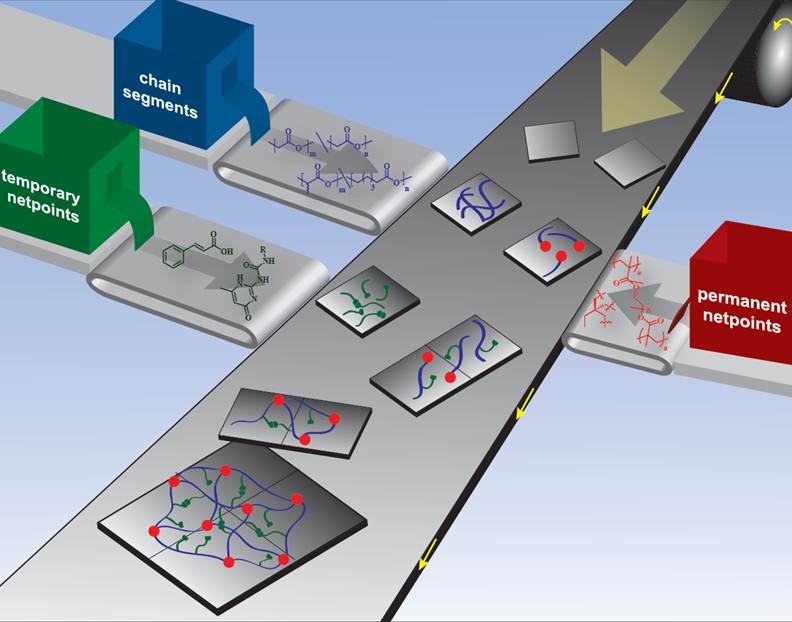 Polymers are not only versatile materials; they also can be equipped with functions like electrical conductivity or the ability to actively move. The shape-memory effect is the ability of a polymer to recover a memorized shape when it is exposed to a suitable stimulus. This effect bases on the combination of a suitable polymer network architecture, which is formed by three components: permanent netpoints, temporary netpoints, and chain segments, and a programming process. Shape-memory polymers have a great potential for different fields of applications. Each application demands a complex combination of properties and functions. To meet all the requirements, tailored polymers have to be synthesized.
Polymers are not only versatile materials; they also can be equipped with functions like electrical conductivity or the ability to actively move. The shape-memory effect is the ability of a polymer to recover a memorized shape when it is exposed to a suitable stimulus. This effect bases on the combination of a suitable polymer network architecture, which is formed by three components: permanent netpoints, temporary netpoints, and chain segments, and a programming process. Shape-memory polymers have a great potential for different fields of applications. Each application demands a complex combination of properties and functions. To meet all the requirements, tailored polymers have to be synthesized.
Now, Andreas Lendlein and co-authors (University of Potsdam) discuss in their Trend article the main synthetic challenges of designing shape-memory polymers and introduce a modular system as a type of “construction manual” for such polymers. The chemistry of permanent netpoints, temporary netpoints, and chain segments is explained, which for example enable the use of various stimuli, or allow the implementation of additional functions besides the shape-memory effect such as biodegradability. Furthermore different approaches for polymer architectures are explained, which form the basis for triple and multi shape materials, which can perform two or more consecutive shape changes. By individual combination of the modular components the foundation for future development of multifunctional and stimuli-sensitive shape-memory polymers is laid.

















